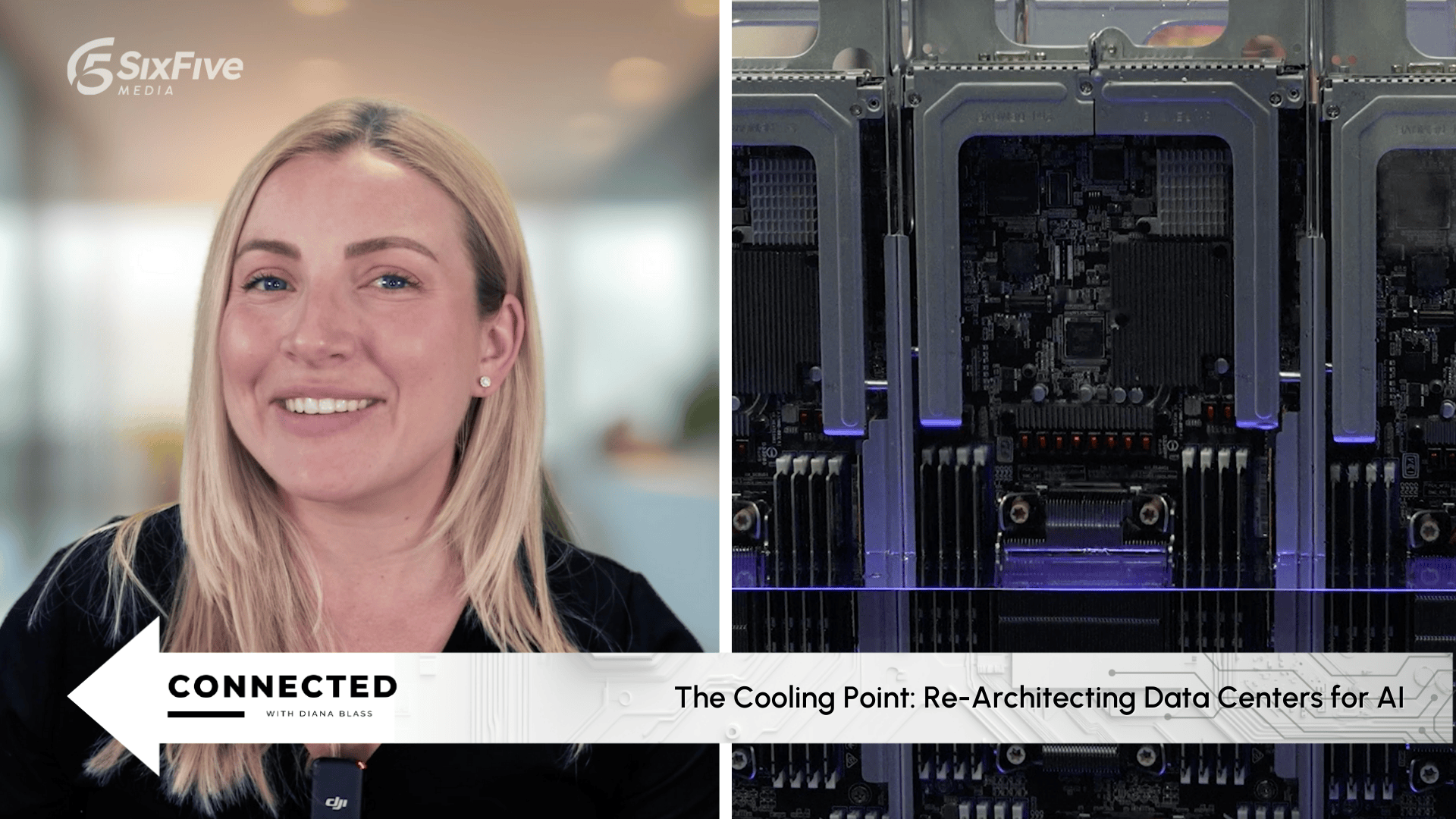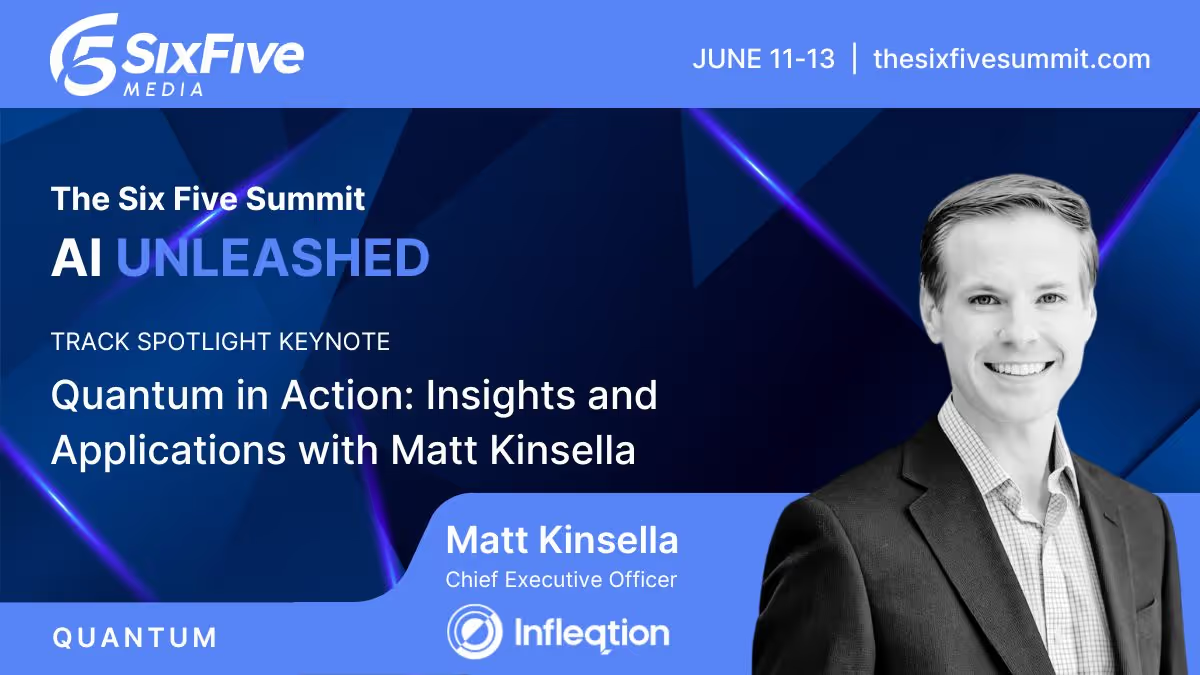InstructLab Demo at IBM TechXchange Conference | IBM TechXchange
Suhas Kashyap, Sr. Product Manager at IBM, joins Keith Townsend to share insights on InstructLab's unique features and its integration within IBM's tech landscape, aiming to revolutionize user engagement and learning.
What if AI could revolutionize the way you learn?Host Keith Townsend sits down with IBM's Suhas Kashyap, Senior Product Manager for InstructLab at watsonx.ai, for Six Five in the Booth at the IBM TechXchange Conference. Together, they delve into InstructLab, a groundbreaking AI-powered learning demo showcased at the event.Their discussion covers:
- The inspiration behind InstructLab's development
- Key features and capabilities of InstructLab
- The role of AI and machine learning in enhancing InstructLab
- How InstructLab supports IBM's broader technology ecosystem
- Future plans and updates for InstructLab
Learn more at IBM.Watch the video below at Six Five Media, and be sure to subscribe to our YouTube channel, so you never miss an episode.
Keith Townsend:
All right. We're here live on the show floor of IBM TechXchange. IBM is known for hybrid cloud mainframes, small large language models. This technology is all coming together on the show floor. But Suhas, I got to say, what do we have for the business user? We're looking at AI and we're looking at these capabilities. We're hearing all of these fancy terms like open source, models, GitHub, et cetera. How do we short cycle the technical jargon to the business value?
Suhas Kashyap:
Yeah, that's a good question, Keith. So the main problem that we are trying to solve is right now model customization or fine-tuning. It's a bit of challenge for a lot of our enterprise customers, because of the nature of data procurement, good quality data. So with InstructLab, what we are doing is we are democratizing AI here. This means to say that what was earlier in the hands of open source developers, technical person, AI engineers, is now being applied in enterprises where even your subject matter experts are able to contribute to large or small language development. This was non-existent before. Consider your HR, legal, all these folks being able to actually contribute. So we are using this to augment large language models and I'm happy to show you how this works in the enterprise world.
Keith Townsend:
I have to see this. I am familiar with the concept with no-code, low-code, as a way for business users to get to the value quicker. We'd love for you to run through a demo.
Suhas Kashyap:
So in this demo, this is a fictitious application that we have. So what this does is this is an intelligent auto insurance claims demo. So consider, God forbid, somebody meets with an accident. So they take a photo and then they want to know what is the insurance covering, any part of it, and more details. So what we are doing over here is they take a photo, they upload it. And in watsonx.ai, we have a multimodal capability which does the image to text conversion. So it describes how the accident is.
And then comes InstructLab, which is our topic. So Instructlab can help categorize the severity of the accident. And we've also used InstructLab to provide the insurance policy details, et cetera, to the small language model over here. So in the end, we also make use of another aspect of WatsonX.ai called agents, where once somebody uploads the photo, it goes, it fetches the policy details, it comes back, and then it gives out information like, "Okay, you've been in a major car accident, so your bumper is going to be replaced. The repainting of the car is covered in your policy details. Your deductible is $500. Your out-of-pocket maximum is X number of dollars." So it gives you all the details, and this was possible because of InstructLab.
Keith Townsend:
So are these code samples available on GitHub or something?
Suhas Kashyap:
So our intent is to make this available for public usage as well. So right now, this was formed with a POC with the customer. But we have that intent of making this available as well.
Keith Townsend:
GitHub link?
Suhas Kashyap:
Sorry.
Keith Townsend:
Where's the GitHub repository in general for the-
Suhas Kashyap:
In general, it is gitHub.com/instructlab.
Keith Townsend:
Suhas, I really appreciate you taking out this time to show me InstructLab. Looking forward to learning more.
MORE VIDEOS

The Cooling Point: Re-Architecting Data Centers for AI - Six Five Connected with Diana Blass
Avi Shetty, Hecheng Han, Dr. George Zhang, Neil Edmunds, John Griffith, Josh Grossman, and Francesca Cain-Watson join Diana Blass to discuss the evolution of liquid cooling in AI systems, exploring design tradeoffs, architectures, and deployment strategies.

The Six Five Pod | Ep. 288: OpenAI’s Valuation Debate, Marvell’s Network Bets, and the Next Bottlenecks for AI Growth
This week, Patrick Moorhead and Daniel Newman unpack why today’s AI moment feels less like the endgame and more like Netflix’s DVD-by-mail phase—the very beginning of a transformation that will redefine the tech industry. They dig into soaring AI valuations and the growing debate over whether today’s leaders signal durable platforms or bubble dynamics, then shift to what really matters under the hood—AI infrastructure, with a sharp focus on networking and memory, informed by insights from Marvell’s Industry Analyst Day. This episode also breaks down recent market moves across major tech players, before closing with a forward-looking take on where AI is headed and what it will take to stay competitive as the pace of change continues to accelerate.

Building Enterprise-Ready Agentic AI with Search - Six Five On The Road
Steve Kearns, GM of Search Solutions at Elastic, joins Nick Patience to share how Elastic is enabling enterprises to move from RAG to agentic AI, solving operational challenges, and powering the next generation of autonomous workflows.
Other Categories
CYBERSECURITY

Threat Intelligence: Insights on Cybersecurity from Secureworks
Alex Rose from Secureworks joins Shira Rubinoff on the Cybersphere to share his insights on the critical role of threat intelligence in modern cybersecurity efforts, underscoring the importance of proactive, intelligence-driven defense mechanisms.
QUANTUM

Quantum in Action: Insights and Applications with Matt Kinsella
Quantum is no longer a technology of the future; the quantum opportunity is here now. During this keynote conversation, Infleqtion CEO, Matt Kinsella will explore the latest quantum developments and how organizations can best leverage quantum to their advantage.

Accelerating Breakthrough Quantum Applications with Neutral Atoms
Our planet needs major breakthroughs for a more sustainable future and quantum computing promises to provide a path to new solutions in a variety of industry segments. This talk will explore what it takes for quantum computers to be able to solve these significant computational challenges, and will show that the timeline to addressing valuable applications may be sooner than previously thought.




